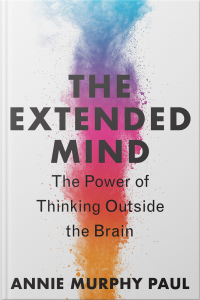By Christian Talbot, President of MSA-CESS

Thank you to all who joined my live conversation with Annie Murphy Paul last week. If you missed it or want to go back over some of Annie’s brilliant insights, you can watch the video here.
My three big takeaways from the conversation were:
- We need to reimagine the design of “school.” We have mostly designed “school” based on the assumption that learning happens in the brain in our skull. In reality, the mind extends into the body, our environment, our relationships, and our tools. (I’m using quotation marks because I believe the idea is bigger than a building, a curriculum, or even a community.)
- We should be of two minds (pardon the pun) about ChatGPT and other Artificial Intelligence tools. On one hand, ChatGPT is a breakthrough tool that—when used well—can extend the mind. On the other hand, it’s not enough to be able to type things into ChatGPT. We also need a lot of baseline knowledge to prompt ChatGPT intelligently and to assess its output critically.
- We should incorporate “offloading” and “resupplying” into our mental model of learning. The biological brain—aka the “naked brain”—is severely limited: our working memory can literally only hold so much information at a given moment; stimuli increase cognitive load; attention is a limited resource, quickly depleted. Designing for cognitive “offloading” and attentional “resupply” can significantly improve learning.
Annie and I mentioned a few additional thinkers whose work you might want to explore:
- Daniel Willingham, author of Outsmart Your Brain (and many other books) on the science of learning.
- Efrat Furst, author of “Teaching with learning in mind,” which provides visual models and cogent descriptions of how learning happens.
- Andy Clark & David Chalmers, authors of the 1995 paper “The Extended Mind” that inspired the title of Annie’s book.
We didn’t have time during the webinar for a great question: What if a school doesn’t have money for upgraded physical spaces or furniture that promote movement, which is one of the ways that students can offload and resupply?
I posed that question to my friends Dina Sorensen and Trung Le. Dina is the co-chair of the American Institute of Architects Committee on Architecture for Education Research Subcommittee; co-founder of the publication Dialogues: The Intersection of Emerging Research & Design for Learning and founder of d.studio, an interdisciplinary design practice. Le is an education architect who has designed schools all around the world (disclosure: he did the master campus plan for Malvern Prep during my tenure as Head of School). He is the co-founder of 180 Studio. Below are their suggestions. We hope you find them helpful!
***
From Dina Sorensen
Some active design ideas for both teachers and students to re-invent what they have:
- Reduce long bouts of sitting by integrating more “vertical learning” and collaborative group practices. Get students out of their seats to work on vertical surfaces. (Whiteboard adhesives and writable paints are fast and easy ways to convert wall spaces that aren’t otherwise being used.)
- Scavenge for height-variable options to allow students to stand, perch, nest, or lounge.
- Collect grab-n-go cushions to enable “floor-based” learning practices.
- Allow students to adapt the environment to what they need and want for comfort and choice.
- Use window sills or other existing room surface features as high desks or table tops.
- Convert freestanding bookcases (or similar storage) to standing desks or stand-at stations. Same for old school resource rolling carts. (Cut a piece of sanded plywood to any desirable shape, mount it on a rolling cart, and paint it.)
- Integrate pop-up standing or walking for discussions between students or teacher and students.
- As the old adage goes, “What you put in the middle matters.” Make it student-centered by reconfiguring your space into a forum, quad, studio, lounge, disco, lab, etc.
- Go a little tinkering crazy and add a DIY musical bench.
- Use the outdoors on a regular basis – being in nature, inventing places to be together outside, creating nooks and niches to observe the changing patterns of season, light, and cycles of life…even a small batch of raised garden beds can promote place-based [David Sobel is amazing] learning opportunities and deeper engagement. Nancy Wells PhD – Cornell – has conducted research on the health and learning co-benefits of school gardens – the strength of that research is very promising. And see some of our research on active design published in PLOS ONE: Brittin J, Frerichs L, Sirard JR, Wells NM, Myers BM, Garcia J, Sorensen D, Trowbridge MJ, Huang TTK (2017). Impact of Active School Design on School-Time Sedentary Behavior and Physical Activity:A Pilot Natural Experiment. PLoSONE 12(12): e0189236. doi: 10.1371/journal.pone.0189236
Start with some of these ideas—more ideas will emerge as a result. Try new ideas as rapid, partial prototypes so that you can get student feedback before refining things too much.
Space shapes behavior but behavior change is what shapes long-lasting benefits through small changes, used widely (for all) and wisely (for all).
These HGTV-type learning environment makeovers that can be done in one weekend. The impact is contagious joy!
From Trung Le
For a few dollars people can buy a copy of The Third Teacher (note: Le was one of the co-creators of this book). Most ideas in the book require no money. Teachers and students just need to change behaviors and design new rituals.

